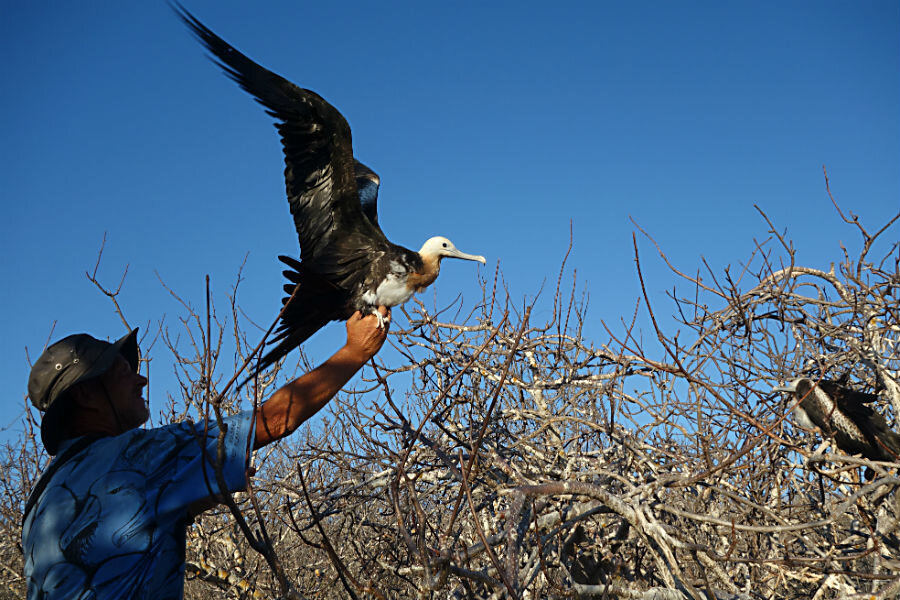Extreme aviators: How do frigatebirds stay aloft for months at a time?
Loading...
Could a bird stay aloft for days at a time, without landing or taking a break? How about an entire month? More than two months?
The answer, as you may have guessed, is a resounding "yes." And which bird, exactly, could accomplish such a feat? That would be the frigatebird.
In a new study, published Thursday in the journal Science, researchers employed the services of solar-powered transmitters attached to dozens of these seven-foot wingspan creatures, delving into the detail of how such epic exploits are feasible.
"It is impressive," Henri Weimerskirch, an ornithologist at the National Center for Scientific Research (CNRS) in France and the lead author of the study, told The Washington Post. "There is no other bird species like them."
The mystery of how they carry out those marathon flights "has attracted much interest, but remains largely unknown because of the inherent difficulties of studying such behaviors in situ," Dr. Weimerskirch and his colleagues note in their paper. To tag along on the journey, the team fitted the birds with devices to measure an array of variables, including wing beat frequency, heart rate, GPS coordinates, acceleration, and altitude.
They found that the average distance covered by frigate birds is 410 kilometers (255 miles) daily. Remarkably, juveniles were the ones who embarked on the longest journeys, and they did so without adult accompaniment.
One youngster was recorded flying more than 55,000 kilometers (34,000 miles), greater than our planet's circumference, over a period of 185 days, taking island breaks for less than four days during the entire period.
What the researchers found was that the frigate birds, when gliding, stayed at an altitude of anywhere between 30 to 2,000 meters (98 to 6,562 feet); only when they needed to forage for food did they dive below that minimum level.
To stay aloft, the birds took advantage of circular updrafts, originating under cumulus clouds, which carried them to heights of up to 1,600 meters (5,249 feet) with barely a flap of the wing. Once the ride was over, they could glide for long distances – up to 60 kilometers (37 miles) – before needing to find another updraft to regain altitude.
"Soaring and gliding are energetically efficient modes of transport, especially for frigate birds, which have very long wings and the lowest wing loading of any bird," Raymond Huey and Curtis Deutsch, professors at the University of Washington, write in a discussion of the research for Science. "Weimerskirch et al. show that frigate birds do little work during lifts and glides, with heart rates and wing beat frequencies generally low during these times."
And how, exactly, do they feed themselves on these gargantuan journeys?
Sometimes, frigate birds will steal food from other birds mid-flight. But most of their nourishment is won by skimming the ocean surface for fish and squid, as well as snatching flying fish from the air, chased from the water by other predators such as tuna.
In fact, the hunt for food is probably what keeps these globetrotters moving. Their prey is "very patchy," Weimerskirch told The Post. "It takes days and days to encounter one opportunity. So they have to cover very long distances to find it."
But one question remains unanswered: How do these creatures sleep, when remaining aloft for days, weeks, months on end?
"Only a few other bird species stay aloft for such extended periods," note Dr. Huey and Dr. Deutsch. "Miniature loggers that monitor sleep-wave patterns should answer whether birds sleep 'with open eye,' as Chaucer stated in The Canterbury Tales."






